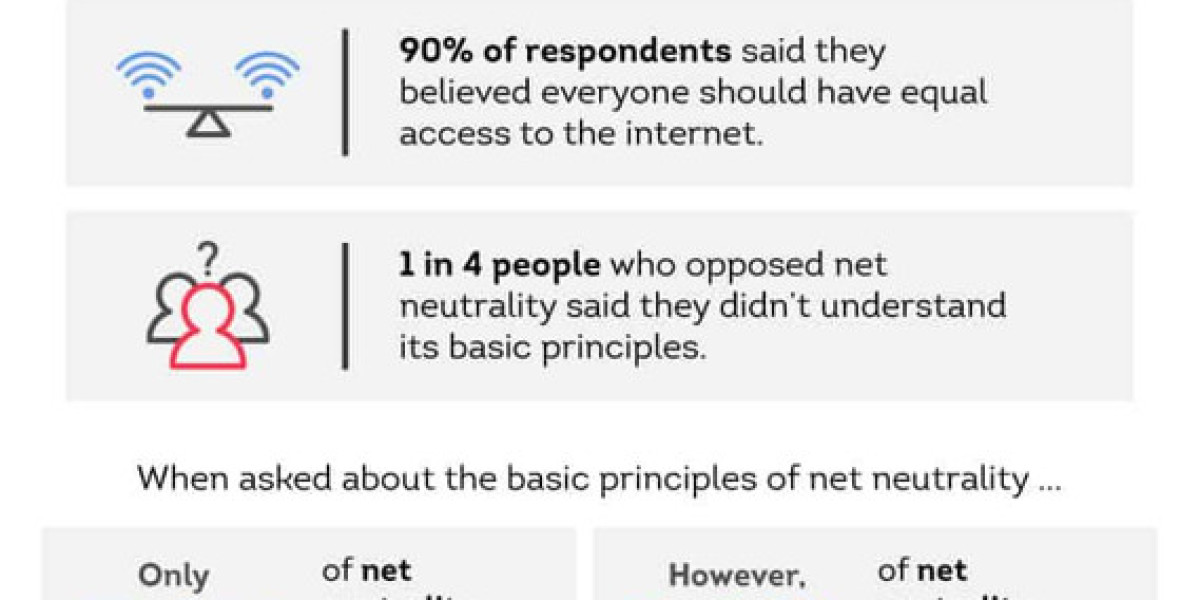Net Neutrality Debate Insights
The principle of equal internet access faced a pivotal moment when regulatory shifts occurred between 2015 and 2017.
A landmark policy initially barred service providers from manipulating speeds or pricing based on content type—
a framework dismantled two years later through a controversial federal commission vote.
Public outcry and legislative challenges followed, highlighting deep divisions over digital equity.
To assess awareness, researchers transformed core net neutrality concepts into survey questions,
probing whether respondents understood implications like throttling or paid prioritization.
Over 1,000 participants revealed gaps in knowledge despite widespread opinions on the topic.
The study aimed to disentangle genuine policy comprehension from polarized rhetoric
while examining correlations between demographic factors and support levels.
Findings underscored how technical terminology often confused everyday users,
with many conflating net neutrality with unrelated issues like data privacy.
Yet clear majorities opposed letting ISPs create tiered internet experiences,
suggesting instinctive alignment with neutrality ideals even amid fuzzy details.
The digital age’s foundational promise hinges on equal access
Yet this ideal faces constant friction between corporate power and public interest
At its core lies a concept mandating ISPs to handle web traffic indiscriminately
No paid fast lanes for streaming giants
No throttling speeds for independent platforms
This framework once classified broadband under Title II telecommunications rules
Treating internet access as essential infrastructure rather than luxury service
Political winds shifted dramatically over a single presidential term
Tech titans initially championed regulations to curb ISP monopolistic practices
But legislative victories proved fleeting when administrations changed hands
The 2017 FCC reversal spotlighted ideological divides
One side views oversight as consumer protection against data gatekeepers
The other frames it as bureaucratic overreach stifling market innovation
Beneath partisan rhetoric simmers a technical reality
Providers control physical networks delivering online content
Absent safeguards, critics warn of tiered internet ecosystems
Where corporate partnerships dictate user experience
The ongoing clash reveals deeper questions
Is cyberspace a public utility or corporate commodity?
Can innovation thrive without baseline traffic equality?
This unresolved tension keeps the debate electrically charged
A significant majority of the American public backs net neutrality, transcending political divides. More than 80% of Americans have expressed their support for it, with strong endorsements coming from Democrats, Independents, and Republicans alike.
Democrats lead in support, with over 86% favoring net neutrality. However, a substantial 77% of Republicans also stand behind this policy, indicating broad bipartisan agreement.
Generational differences do not significantly impact support for net neutrality. Both Baby Boomers and Millennials show nearly identical levels of backing, at 82% and 83% respectively. While Millennials are often recognized for their high engagement with technology, older generations are increasingly adopting and using new technologies as well.
Net neutrality remains a rare point of bipartisan agreement in the U.S.,
though intensity of support varies sharply across party lines.
More than three-quarters of Americans favor Supreme Court review of the issue,
reflecting its perceived national significance.
Yet judicial outcomes may clash with public sentiment —
in 2018, the nation's highest court denied efforts to reverse
the Federal Communications Commission's controversial stance.
While 61% of Democrats consider protecting open internet principles crucial,
only 31% of Republicans share that urgency.
This partisan gap underscores how ideological divides reshape
priorities around digital equity, even when consensus exists
on the topic's fundamental importance.
The debate around net neutrality reveals unexpected alignment between rival camps on core protections,
even as fundamental disagreements persist about regulatory frameworks.
Both advocates and critics overwhelmingly reject letting ISPs deliberately slow access to specific sites –
a stance shared by over eight in ten supporters (86%) and nearly as many opponents (81%).
This unity extends to preventing degraded content delivery speeds (similar approval rates)
and blocking broadband providers from filtering news or informational resources.
The regulatory designation of ISPs sparks sharpest conflict.
A striking 80% of net neutrality proponents oppose classifying providers as public utilities,
while opposition softens significantly among critics – only 56% resist this categorization.
This divergence underscores how technical safeguards attract cross-ideological support,
while structural governance models remain politically polarizing.
Net Neutrality Beliefs and Confusion
A striking disconnect emerges between labels and beliefs in the net neutrality debate.
While 34% of those opposing the policy rejected its core ideals,
nearly a quarter of self-identified supporters (24%) paradoxically disagreed with the same principles.
This ideological inconsistency underscores widespread confusion,
as 25% of critics openly admitted lacking fundamental knowledge about the issue.
Yet consensus emerges on one front:
90% of all participants agreed universal internet access remains non-negotiable,
revealing shared priorities beneath surface-level policy disagreements.
The repeal of net neutrality in December 2017 created significant public concern, though immediate consequences weren't apparent. A substantial majority—nearly 7 in 10 Americans—expressed fears about potential content censorship and blocking.
Almost two-thirds of respondents anticipated discriminatory service delivery, with internet service providers potentially offering varying connection speeds based on customer tiers or content preferences.
Interestingly, a small segment (18%) incorrectly associated the repeal with a potential rise in cybercrime, showing some misunderstanding about net neutrality's purpose and function.
Only a tiny minority—just 8%—believed the policy change would have no meaningful impact on internet usage or accessibility.
Industry analysts have emphasized that transformations to the internet landscape would likely emerge gradually rather than dramatically. They caution that consumers should expect evolutionary rather than revolutionary changes to their online experience following the regulatory shift.
The potential repeal of net neutrality could lead to higher costs for accessing specific content and services. For instance, a significant number of people indicated they would be willing to pay extra for video streaming services, with a median premium of $10, and 48% agreeing to this. In contrast, only 24% would pay a premium for music streaming, even though the median amount they were willing to pay was just $5. This suggests that people are more likely to pay extra for video and music streaming services, as these platforms, such as Netflix, Hulu, Apple Music, and Spotify, already charge subscription fees.
Despite the political divide on the issue, a majority of Americans support net neutrality. However, this support doesn't always correlate with a deep understanding of the policy. When it comes to paying more for certain services, some are seen as more valuable than others.
Whether one supports or opposes net neutrality, the repeal may result in higher prices for various services. It is crucial to understand which services are worth the additional cost. To help you make informed decisions, Comparitech offers information on the best VPN services to maintain your own net neutrality, along with comprehensive reviews of the best overall VPNs. You can also find comparisons and reviews of hundreds of products and services. Visit their website for more details.
To gauge public understanding of net neutrality, we compiled a list of nearly 15 basic principles from reputable sources and converted them into questions. Participants were asked to rate their agreement with each principle and then declare their stance on net neutrality. We calculated the percentage of respondents who opposed net neutrality by both name and principle by analyzing the responses of those who disagreed with each tenet.
For this study, we used Amazon’s Mechanical Turk to survey 1,003 participants on March 13, 2019. All respondents had internet access. The sample was evenly split between males and females. The majority (60%) identified as millennials, 27% as Generation X, and 11% as baby boomers, with the remaining 2% identifying as either Generation Z or the Silent Generation. Politically, 48% identified as Democrats, 27% as independents, and 25% as Republicans.
Throughout the survey, attention-check questions ensured that participants were paying attention and providing consistent data. Those who failed these checks were excluded from the results. The study's limitations include the reliance on self-reported data, which can be flawed due to issues like telescoping, selective memory, and exaggeration. Additionally, since the survey was conducted online, participants might have more knowledge about the topic. No statistical testing was performed, so the findings are based on means alone.
Feel free to share the graphics and content of this project for noncommercial purposes, but please link back to this page to give credit to the authors.
What is a Netflix VPN and How to Get One
A Netflix VPN is a tool that enables viewers to bypass geographical restrictions and access a wider range of content by masking their location. By connecting to servers in various countries, users can unlock movies and TV shows that are otherwise unavailable in their region, enhancing their streaming experience.
Why Choose SafeShell as Your Netflix VPN?
If your Netflix vpn not working due to outdated software or blocked access, SafeShell VPN offers a reliable solution to unlock region-restricted content effortlessly. Here’s why it stands out:
- Advanced Bypass Technology : SafeShell VPN employs cutting-edge protocols updated regularly to outsmart Netflix’s detection systems, ensuring uninterrupted access to global libraries.
- Multi-Device Flexibility : Stream on up to five devices simultaneously across platforms like iOS, Android, Smart TVs, and more, eliminating the hassle of switching devices.
- Dual-Region App Mode : Unlock content from multiple regions at once, a unique feature that expands your entertainment options beyond typical VPN limitations.
- Zero Speed Compromise : With optimized servers, enjoy buffer-free 4K streaming and instant loading, even during peak hours—no bandwidth throttling.
- Military-Grade Security : The proprietary ShellGuard protocol encrypts your data, shielding your Netflix sessions from ISP tracking or data leaks.
- Risk-Free Testing : Try SafeShell’s full features with a flexible free trial, bypassing the “Netflix VPN not working” issue before committing. Say goodbye to outdated tools and hello to seamless streaming.
A Step-by-Step Guide to Watch Netflix with SafeShell VPN
To start using SafeShell Netflix VPN , follow these steps:
- First, head over to the SafeShell VPN website and subscribe to a plan that suits your needs.
- Next, download and install the SafeShell VPN app on your device, whether it's a Windows PC, macOS, iOS, or Android.
- Open the SafeShell VPN app and log in to your account. For the best Netflix experience, select the APP mode.
- Browse the list of available servers and choose one located in the region whose Netflix content you want to access, such as the US, UK, or Canada.
- Click "Connect" to establish a connection to the selected server.
- Finally, open the Netflix app or visit the Netflix website, log in with your Netflix account, and enjoy streaming the content from the region you selected.







